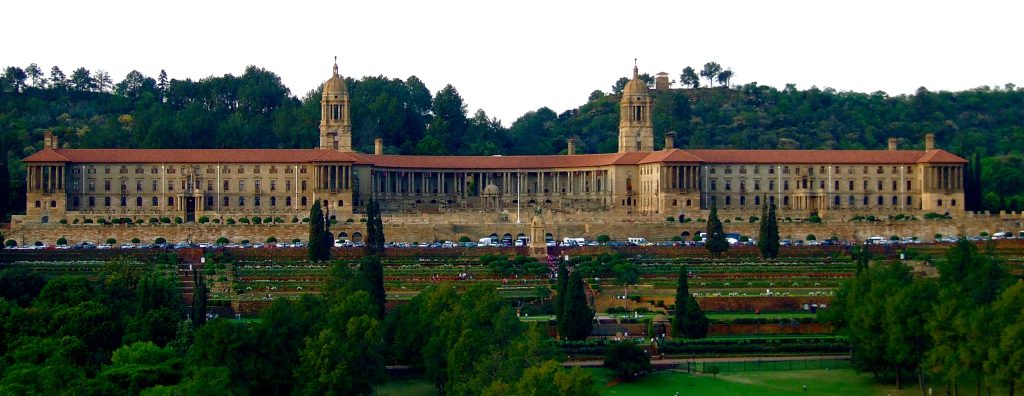The Union Buildings, located at Meintjieskop in Pretoria, stand as a symbol of South Africa’s administrative and political heart. Designed by Sir Herbert Baker, this iconic complex is not only an architectural masterpiece but also a significant historical landmark. The cornerstone of the Union Buildings was laid in November 1910, and the construction was completed in 1913. Since then, it has been a site of pivotal events in South African history, reflecting the nation’s journey through time.
Architectural Vision and Design
Sir Herbert Baker, a renowned British architect, was commissioned to design the Union Buildings as the seat of the South African government. Baker was inspired by the grandeur of classical architecture, and he sought to create a structure that would convey dignity, stability, and unity. His design integrates elements of the Cape Dutch style, prevalent in South Africa, with Edwardian and classical influences.
The Union Buildings are characterised by their grand semicircular shape, consisting of two wings joined by a central amphitheater. The wings represent the two chambers of the Parliament of South Africa. The amphitheater, an open-air space, was designed to host public events and ceremonies. The buildings are constructed from light sandstone, which gives them a warm, golden hue, harmonising with the natural landscape of Pretoria.
Structural Features
Length and Layout: The Union Buildings stretch 275 metres in length, making them one of the largest structures in South Africa. The layout comprises two wings extending from a central courtyard, symbolising the unification of different government entities.
Central Dome: At the heart of the complex is the impressive central dome, rising above the collonaded facade. This dome is a focal point of Baker’s design, representing authority and governance.
Gardens and Grounds: The Union Buildings are surrounded by beautifully manicured gardens, which feature indigenous South African plants. The terraced gardens cascade down the hill, offering a serene environment and stunning views of the city. These gardens also host several important statues and monuments, including the 9-metre-tall statue of Nelson Mandela unveiled in 2013.
Historical Significance
The Union Buildings have witnessed numerous historic events. They were the site of the inauguration of South Africa’s first democratically elected president, Nelson Mandela, on May 10, 1994, and currently, the site of the 6th inauguration the country has witnessed, the second inauguration of Cyril Ramaphosa. The inauguration of Nelson Mandela marked the end of apartheid and the beginning of a new era for the country.
During the apartheid era, the Union Buildings were a symbol of governmental power and authority. However, post-apartheid, they have come to symbolise unity and democracy. The transition from an emblem of segregation to one of reconciliation is epitomised by Mandela’s statue, which stands with outstretched arms, signifying peace and inclusiveness.
The Union Buildings remain a powerful symbol of South Africa’s political landscape and architectural heritage. Sir Herbert Baker’s design has not only endured the test of time but continues to inspire awe and respect. As the seat of government, the Union Buildings embody the ideals of unity, governance, and democracy, making them a cornerstone of South African national identity. The harmonious blend of architectural splendor and historical significance ensures that the Union Buildings will remain a revered landmark for generations to come.

